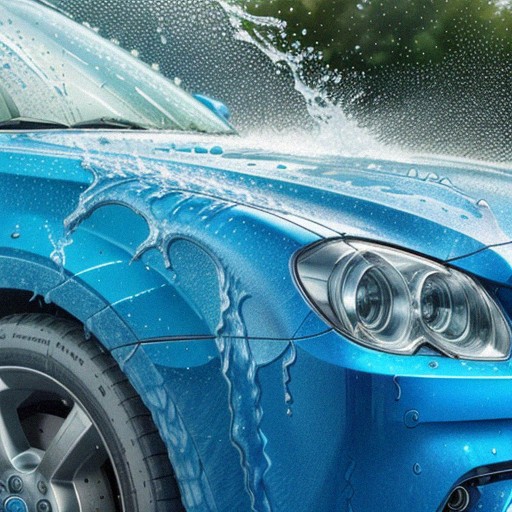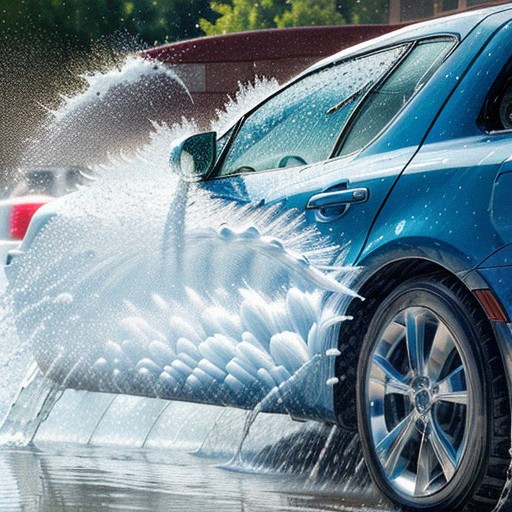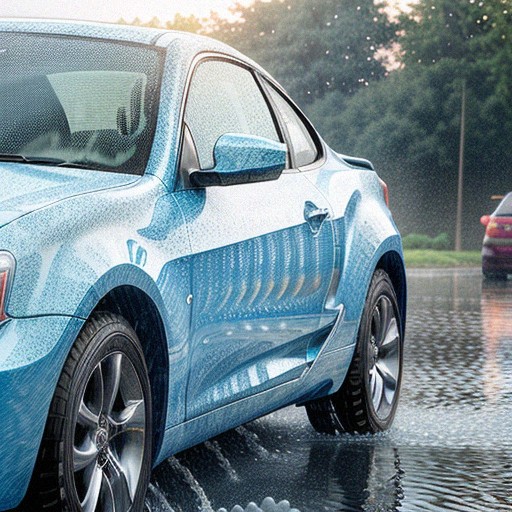How much water is used to wash a car? This is a question that often crosses the minds of car owners. On average, a standard home car wash using a hose can consume anywhere from 80 to 140 gallons of water. However, this number can vary based on several factors such as the type of hose nozzle, the duration of washing, and whether you let the water run continuously.

How much water is used to get a car wash at a professional facility? Professional car washes typically use more water compared to home car washing. An automatic car wash can use around 35 to 50 gallons of water per vehicle. Full-service car washes that include hand washing and detailing might use even more water due to the thoroughness of the process. It’s important to note that some modern car wash facilities implement water recycling systems to reduce their environmental impact.
How much water is used to pressure wash a car? Pressure washing a car can be more water-efficient compared to traditional hose washing. A pressure washer uses around 2 to 5 gallons of water per minute. This means that a 10-minute pressure wash session might use approximately 20 to 50 gallons of water. Using a pressure washer with a lower flow rate can further reduce water consumption.
Contents
Factors Affecting Water Usage
Several factors influence the amount of water used during car washing:

Water Flow Rate: The rate at which water flows from your hose or pressure washer nozzle plays a significant role. Lower flow rates can result in reduced water consumption. Consider using a nozzle with adjustable settings to control the flow.
Duration of Washing: The longer you wash your car, the more water you’ll use. Being efficient and focused during the washing process can help conserve water. Pre-rinse your car to loosen dirt, then turn off the water while you soap up and scrub the vehicle.
Type of Equipment: Different car washing methods and equipment have varying water requirements. Automatic car washes, for example, might recycle water, while pressure washers use water more sparingly. Research different car wash methods and choose one that aligns with your water conservation goals.
Tips for Reducing Water Consumption

1. Use a Bucket: Instead of letting the hose run, fill a bucket with soapy water and use it to wash your car. This can significantly reduce water wastage. Plus, you can control the amount of water you use per section of the car.
2. Opt for a Pressure Washer: If you have access to a pressure washer, consider using it for efficient and water-saving car cleaning. Pressure washers use less water due to their high-pressure delivery, and they can make quick work of stubborn dirt.
3. Turn Off the Hose: When you’re not actively rinsing, turn off the hose to prevent unnecessary water flow. This simple step can make a big difference in reducing water wastage.
4. Choose Professional Car Washes Wisely: If you prefer professional car washes, opt for facilities that use water recycling systems to minimize water usage. Many modern car wash businesses are investing in eco-friendly practices.
Frequently Asked Question
How Much Water Is Used To Wash A Car?
When it comes to maintaining the cleanliness and appearance of your car, water usage is a significant factor to consider. The question of how much water is used to wash a car encompasses various scenarios, from home car washing to professional car wash facilities. Understanding the water consumption associated with these activities can lead to more environmentally conscious practices. In this article, we’ll explore the water usage involved in washing a car, whether you’re doing it yourself or seeking professional services.
How Much Water Is Used to Wash a Car?
How much water is used to wash a car at home using a standard hose? On average, a single home car wash session can consume approximately 80 to 140 gallons of water. However, this range can fluctuate based on factors such as the type of hose nozzle you’re using, the duration of the washing process, and whether the water is continuously running.
Transitioning to professional car wash facilities, the water consumption may differ. An automatic car wash, for instance, can utilize about 35 to 50 gallons of water per vehicle. Meanwhile, a full-service car wash, which includes hand washing and thorough detailing, might require a higher water volume due to the comprehensive nature of the service. It’s noteworthy that certain modern car wash establishments implement water recycling and reclamation systems to mitigate their water usage impact on the environment.
How Much Water Is Used to Pressure Wash a Car?

Pressure washing presents an alternative approach to car cleaning that is potentially more water-efficient than traditional hose washing. A typical pressure washer utilizes around 2 to 5 gallons of water per minute of operation. For instance, a 10-minute pressure wash session could translate to water consumption ranging from 20 to 50 gallons. Opting for a pressure washer with a lower flow rate can further minimize water usage while effectively removing dirt and grime from your vehicle’s surface.
Factors Influencing Water Usage
Several factors contribute to the amount of water used during car washing:
Water Flow Rate: The rate at which water is dispensed from the hose or pressure washer nozzle plays a crucial role in determining water consumption. Opting for a nozzle with adjustable settings allows you to control and potentially reduce the water flow.
Washing Duration: The time spent washing your car directly impacts water usage. Taking an efficient and focused approach to the washing process can lead to water conservation. For instance, pre-rinsing your car to loosen dirt and then turning off the water while applying soap can save water.
Choice of Equipment: Different car washing methods and equipment have varying water requirements. Automatic car washes may incorporate water recycling mechanisms, while pressure washers utilize water more efficiently due to their high-pressure delivery.
Water-Saving Techniques
1. Use a Bucket: Instead of allowing the hose to run continuously, consider filling a bucket with soapy water. This approach allows you to control the amount of water used and target specific areas of your car.
2. Embrace Pressure Washing: If you have access to a pressure washer, leverage its efficiency and water-saving benefits. The high-pressure stream can effectively clean your car with less water.
3. Manage Water Flow: When you’re not actively rinsing or washing, turn off the hose or pressure washer to prevent unnecessary water wastage.
4. Choose Environmentally Friendly Car Wash Facilities: When opting for professional car wash services, seek out facilities that prioritize water conservation through the use of water recycling systems.
Caring for your car’s appearance while being conscious of water consumption is essential in today’s environmentally aware world. The question of how much water is used to wash a car spans various contexts, from DIY home washing to professional car cleaning. By understanding the factors influencing water usage and implementing water-saving techniques, you can contribute to sustainable car maintenance practices. Whether you’re washing at home or relying on professional services, making mindful choices regarding water consumption benefits both your vehicle and the planet.